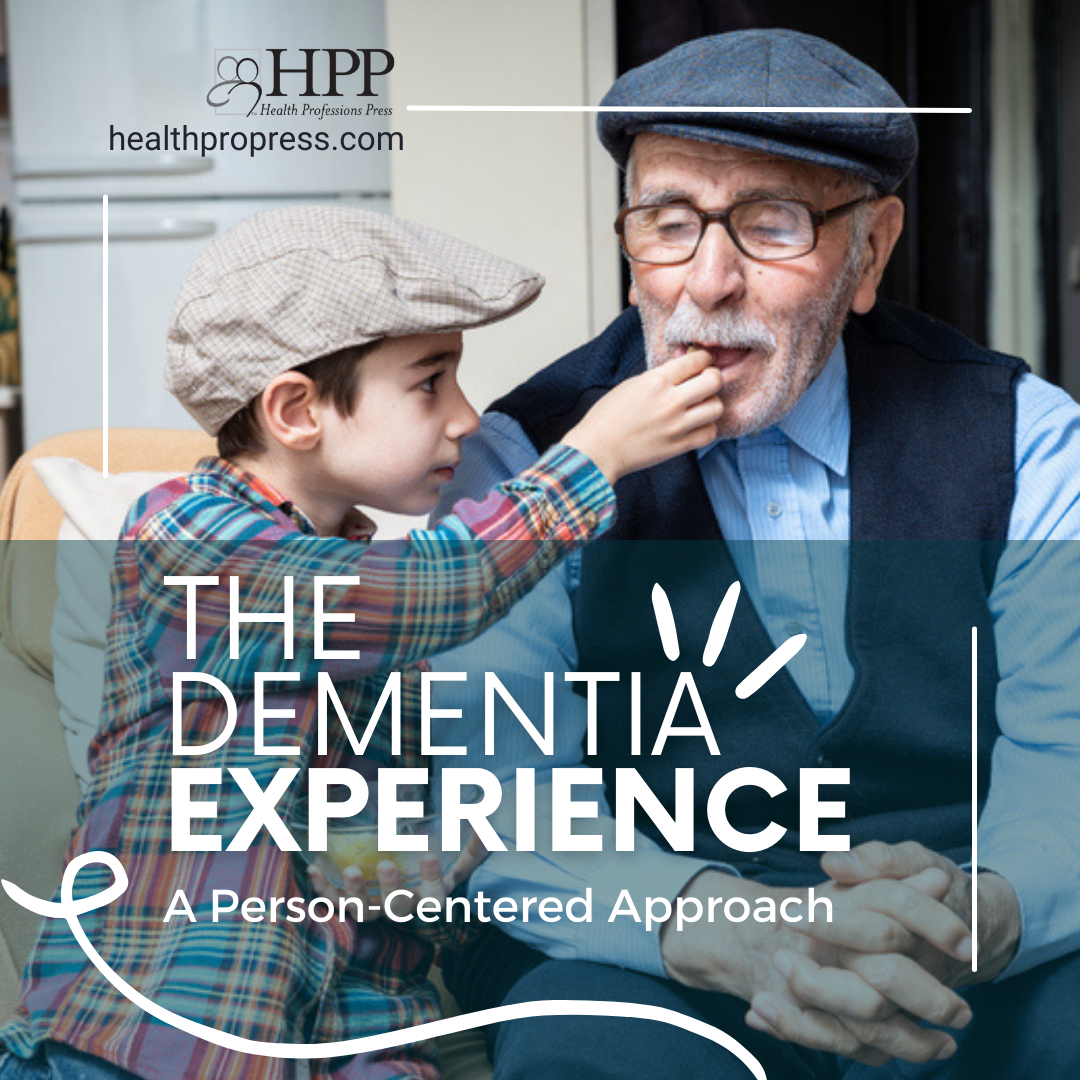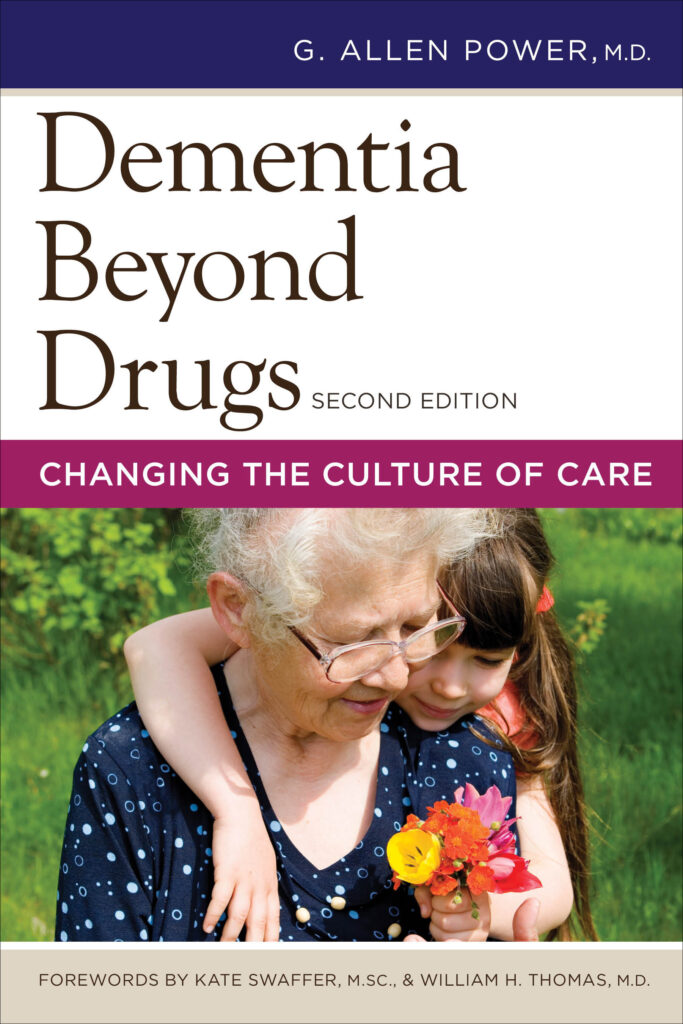
The Experiential Model of Dementia Care
The biomedical model (that is, a mindset of dementia that focuses only on physical and cognitive decline) sees dementia mostly as neuropathology. However, viewing only what can be easily observed and measured is inadequate to our needs. We must ask ourselves: how is dementia experienced by the person with the changing brain?
That experience is more than simple structural and chemical defects; many other factors come into play, such as life history, relationships, ethnicity and culture, values, spirituality, interactions, and coping styles. Seeing dementia as a life experience and viewing the world through those eyes is the key to better understanding the needs of people with dementia.
Let us take a moment, therefore, to redefine dementia in a manner that describes the process, but without stigmatization and with a focus on the person’s changing experience:
Dementia is a shift in the way a person experiences the world around her/him.
Therefore, a new model comes to the forefront: The Experiential Model. Let’s compare and contrast the features of the biomedical model and an experiential model.
| Biomedical Model | Experiential Model | |
| Dementia defined | Progressive, irreversible, fatal, | Shift in perception of world |
| Brain function | Loss of neurons and cognition | Brain is malleable, learning can occur |
| View of dementia | Tragic, costly, burdensome | Continued potential for life and growth |
| Research goals | Almost entirely focused on prevention and cure | Find ways to improve lives of those with dementia |
| Environmental goals | Protection, isolation, disempowerment | Maintain well-being and autonomy |
| Environmental attributes | Disease-specific living areas | Inclusive living areas |
| Focus of care | Programmed activities; tasks and treatments; less attention to care environment | Diverse engagement; relationships; care environment is critical |
| Staff/family role | “Caregiver” | “Care partner” |
| View of behavior | Confused, purposeless; driven by disease and neurochemistry | Attempts to cope, problem solve, and communicate needs |
| Response to behavior | “Problem” to be “managed”; medication, restraint | Satisfy unmet needs; focus on individual perspective |
| Nonpharmacological approaches | Focus on discrete interventions | Focus on transforming care environment |
| Overall result | High use of meds; continued suffering; decreased well-being | Rare use of meds; attention to spiritual needs; improved well-being |
Dementia defined
The biomedical model sees dementia as an irreversible, progressive, and ultimately fatal disease. The experiential model sees dementia as a shift in the person’s perception of his or her world. The brain, while altered, remains somewhat plastic and is intimately tied to the surrounding environment. In fact, in many cases, individuals with dementia are more exquisitely sensitive to the attributes of their surroundings than the rest of us tend to be.
Brain function
While the biomedical model views the disease process as one of loss of neurons and their associated cognitive functions, the experiential model holds that new learning can occur. (This happens all the time but is usually not recognized for its potential.)
Research goals
The biomedical view sees dementia as tragic and costly. The predominant aim of research is to find a cure. The experiential view sees dementia as a challenge to make meaningful connections and improve the lives of all who live with the condition. This view doesn’t put the lives of millions on hold while waiting for new treatments to be discovered.
View of dementia
The biomedical view sees people living with dementia as a burden and creates care environments that foster dependence. Biomedical dementia requires caregivers. The experiential view sees people for the gifts and abilities they continue to express to others. Experiential dementia requires care partnerships that empower all and maximize interdependence.
Environmental goals and attributes
Several other attitudes and practices arise from the way we view dementia. The biomedical view leads us to conclude that people with dementia need a protective environment. This translates to isolation, disempowerment, and often institutionalization and overmedication. Furthermore, people’s abilities are judged mainly through standardized cognitive tests, with broad conclusions drawn based on the resultant scores. Care planning and living environments are defined by the illness, not the individual.
By contrast, the experiential model holds that well-being is not a function of cognitive skills, and that people may retain complex and integrative abilities far into their lives with dementia. People with dementia always remain unique individuals, and this uniqueness should be the driving force in their lives and their care. Autonomy should be “respected and supported, using a highly relational approach—one that seeks to protect the rights of vulnerable people and value embodied expressions of choice, preference and connection (especially in those whose language abilities are compromised)” (Greenwood, 2015, personal communication).
Focus of care
The biomedical model focuses on tasks and treatments and pays relatively little attention to the many subtle interactions and features of the care environment. The experiential model focuses on relationships and sees interpersonal interaction and the overall environment as critical to the well-being of the person with dementia.
View of behavior, response to behavior, and behavioral goals
Each model also holds important implications for how we view and respond to personal expressions in people living with dementia. The biomedical view sees such expressions as confused, purposeless, and neurochemically mediated. They are viewed as a “problem” that rests with the individual with the “disease” and that must be “managed.” The primary goal is to return people to a “normal” state, often by using psychotropic medication.
Thus the biomedical model centers on the perceptions and needs of the families and care staff, while discounting the unique perspective of the person who actually experiences the illness. With this attitude, the opinions of the person with dementia are regarded as less valid and caregivers resort to medication to “fix” the problem as they perceive it.
But if unmet needs are present, as studies show they often are, then we must agree with Cohen-Mansfield’s contention that “even if there was a ‘magic pill’ that stopped the agitated behavior occurring immediately and had no side effects, we shouldn’t give it or start there” (2005, May). Why? Because doing so would still ignore those unmet needs and continue to rob the person of well-being.
The experiential model views people with dementia through their own eyes as far as possible. It views the person’s expressions as attempts to problem solve, cope with stressors, achieve control, or communicate needs. These expressions are interpreted as our problem, because we have not provided the optimal environment for the person’s wellbeing. The primary goal is to conform the care environment to the individual’s needs, rather than to try to “normalize” the individual.
Staff/family role and nonpharmacologic approaches
In the biomedical model, nonpharmacological approaches tend to center on discrete interventions, such as a hand massage, washcloth folding, or pet therapy, with little attention to the overall environment. The caregivers (as they are called in the biomedical model) respond to a person’s expressions of need by saying, “He’s confused, because he has dementia.”
While nonpharmacological approaches are a mainstay of the experiential model, the primary goals should be to transform the care environment and proactively enhance well-being. In this model, care partners (as I am calling them here) respond to such expressions by saying, “I’m confused, because I don’t understand what he’s trying to tell me.”
Overall result
As you can see, there are fundamental differences between the two views, and each leads to its own set of vastly different attitudes and approaches. This explains why one approach leans heavily on potentially harmful medications while the other almost eliminates their use.
For more information on the experiential model of dementia care and how it can be used to reduce psychotropic drug use and improve the lives of people with dementia, see Dementia Beyond Drugs: Changing the Culture of Care, Second Edition by G. Allen Power, M.D. Copyright 2017 by Health Professions Press.
Read the book!

Dementia Beyond Drugs
Changing the Culture of Care
Second Edition
By G. Allen Power, M.D.
Reducing the use of psychotropic drugs in the symptomatic treatment of dementia is key to successfully implementing compassionate, person-centered practices in your organization—and this book shows clearly why and how it can be done. The revised second edition of this award-winning resource introduces new research, language, and examples to reinforce the core message that antipsychotic medications are not the solution to ease the distress experienced by individuals living with dementia. Outlined here is the information and inspiration you need to provide alternative solutions for individualized support and care.
